How To Season A Cast Iron Skillet
As an Amazon Associate I earn from qualifying purchases.
Today I am thrilled to bring you a guest blogger who will be speaking on a topic we all need to know about – how to season a cast iron skillet the right way. As a Mechanical Design Engineer, Richard Hall may seem an unlikely choice for a food blogger, but his heritage, common-sense know-how, and generosity in sharing his knowledge with us make him the perfect choice for a topic of the utmost importance to any Southern cook! Thank you, Rich!
Hey all,
Since Southern Plate has all these great Southern recipes, I thought it might be useful to share how to season a cast iron skillet or other types of cast iron cookware. You may ask, what is seasoning and why do I need to season my cast iron skillet? The answer is very simple. Seasoning makes it non-stick like all the new miracle cookware. And the why is you can buy and maintain a non-stick skillet with nothing more than vegetable oil and shortening and common sense and it will never wear out. The cast iron skillet can be used to cook on the stovetop, the oven, or the grill. A good iron skillet can be passed down as an heirloom if taken care of properly.
What You Need to Season a Cast Iron Skillet
It is very simple to do albeit a little messy. What you will need is:
- The cast iron skillet
- A box of vegetable shortening, which can be purchased in your favorite supermarket for less than $2.
- A roll of heavy paper towels
- Your oven
Just a quick note, the seasoning of a new skillet and the re-seasoning of an are the same except for the first step. So let’s get started.
How to Season a Cast Iron Skillet
Wash new skillets before seasoning
Make sure your new has been washed in hot water and mild dish soap. This will remove the factory anti-rust coating. For re-seasoning an existing skillet, just make sure to wipe the entire surface with hot water and a clean washcloth or a paper towel (sponges need not apply). Dry the skillet by heating it on the cooktop then let it rest and cool. Preheat your oven to 200 degrees.
Season with vegetable shortening or oil
Fold the paper towel into a fourth and place a dollop of vegetable shortening in the skillet. The size is not important, but for a 10” skillet, use about 1/4 of a cup. More can be added as required to cover.
Instead of lard or vegetable shortening, use any kind of vegetable oil. I recommend refined coconut oil as it has a higher smoke point.
Take the paper towel and coat the interior, the exterior down to the bottom edge, and the handle liberally.
I don’t coat the very bottom of the skillet, as any cooking surface that it touches will make smoke and just burn off the shortening or oil.
Place the skillet in the oven
Once you have the skillet coated, place it in the oven (at 200 degrees) and set a timer for 3 hours. This low temp will open the cast iron pores up and allow the vegetable shortening to penetrate as it liquefies.
Remove from the oven
After the time is up, cut off the oven and let the skillet cool. Once it is cool enough to touch, wipe it down with another paper towel to remove any or vegetable shortening and just leave a on the surfaces.
In another hour or so, wipe it down again.
After this final wipe, the skillet will continue to cool and in about an hour will look like the last picture.
Using Your Cast Iron Skillet
Now you are ready to use the skillet. For the first couple of uses, cook something greasy like bacon or sausage. This will help heat cycle and re-coat the interior surface which will make the non-stick coating better. Also, be aware that it is going to smoke for the first couple of uses as it heat cycles and burns off the water trapped in the pores and the excess vegetable shortening.
To maintain the skillet you will need to wipe the interior every couple of months with bacon grease during a heat cycle or cook something greasy and re-season about every 2 years following the process above.
Also, don’t let food sit in the skillet as this will remove the seasoning.
After each use, wash the skillet out using a very mild soap solution and warm water. NEVER wash in the dishwasher. The reason for using mild soap solution is to keep from removing the seasoning layer.
One other note that I personally do is the drying step after a wash. I will turn the cooktop on to high heat and place the wet skillet on it for about a minute. This will heat the skillet up enough to dry the water and heat cycle the pores. This keeps everything as it should be.
—
If you choose, you can render your own lard from bacon drippings. If you own a microwave bacon-cooking tray it is very easy. Just cook some bacon and let the drippings cool either in the tray or pour them into a bowl or shallow dish while still hot. Once it has cooled and congealed, you can use it just like the vegetable shortening as described above. This is perfect for the occasional re-seasoning of your skillet.
I hope this has been helpful and if you have any questions just direct them to Southernplate.com and I’m sure Christy can find me to get the answers.
See you ’round,
Rich
Before you go, check out these great cast iron recipes:
Southern Cubed Steak and Milk Gravy
Skillet Carrot Cake from Southern Cast Iron

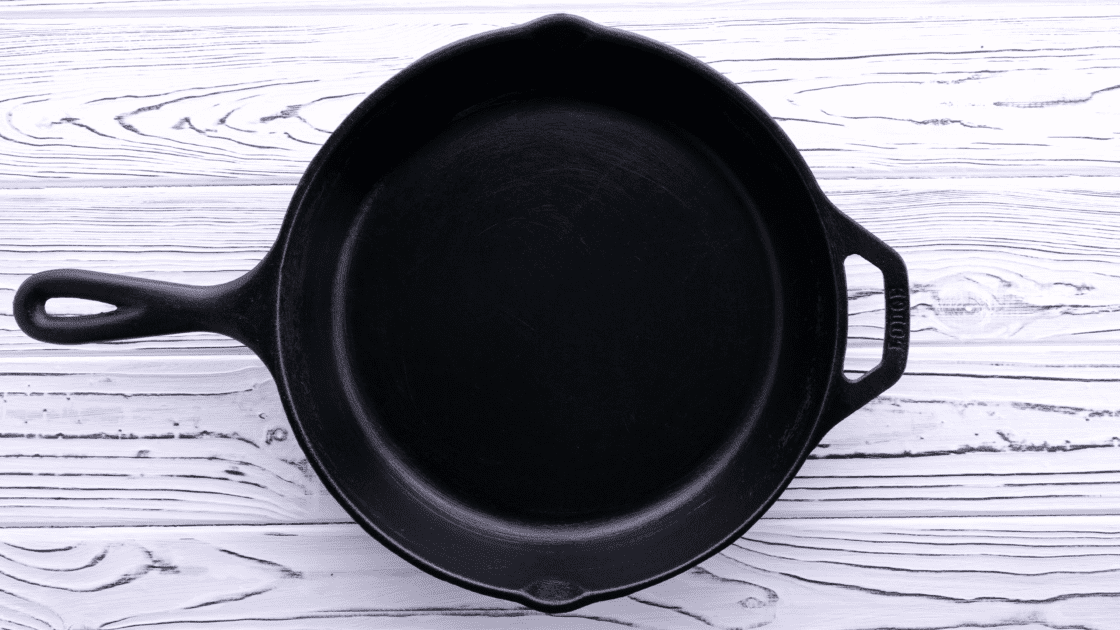
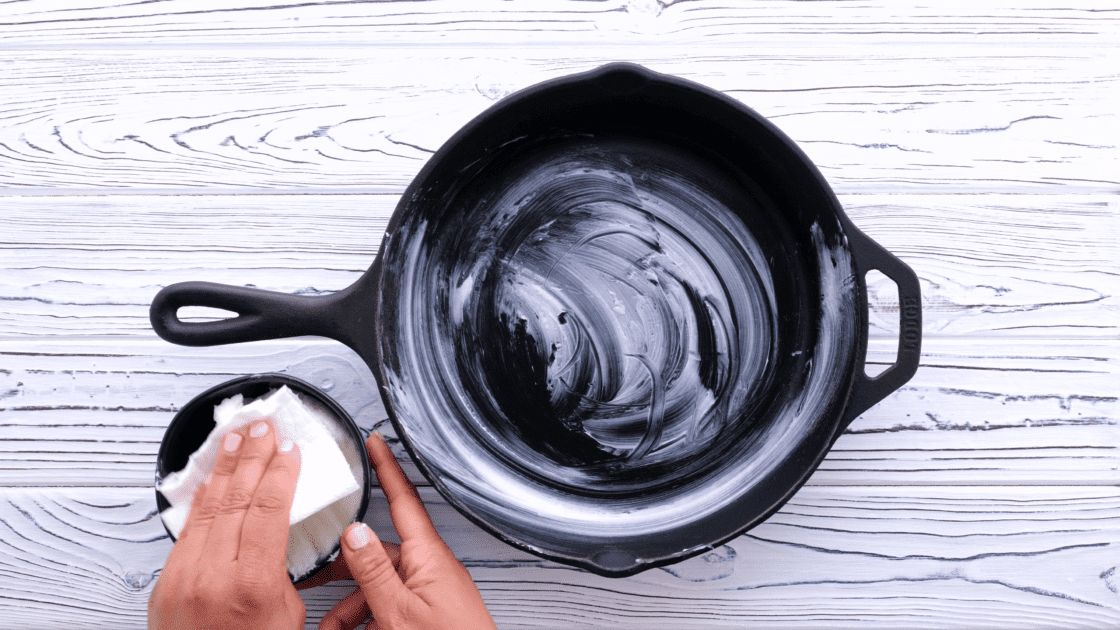
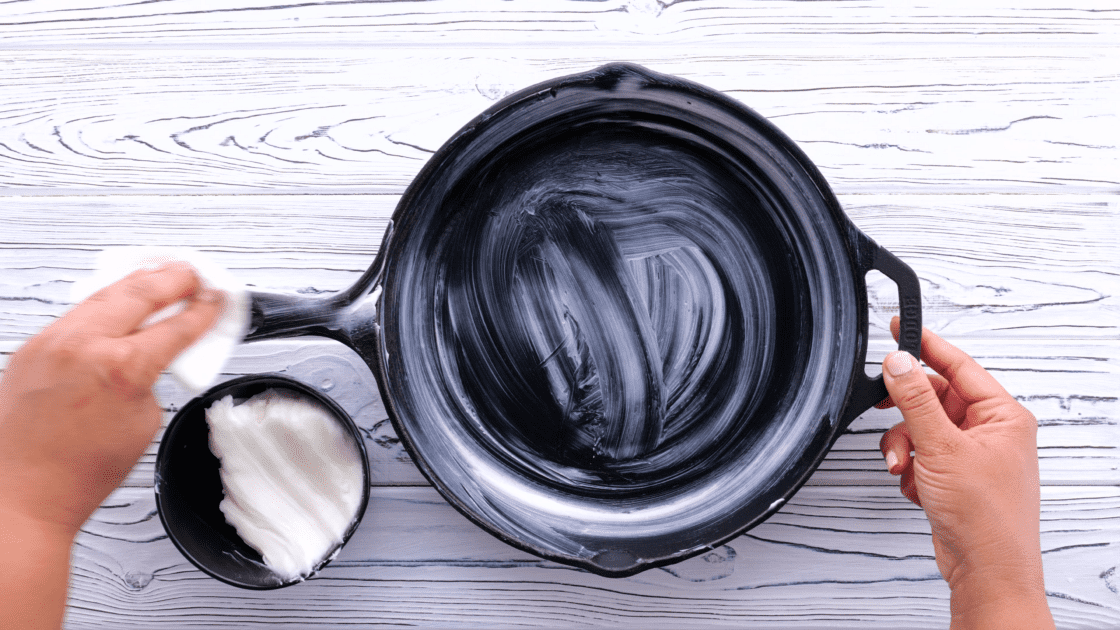
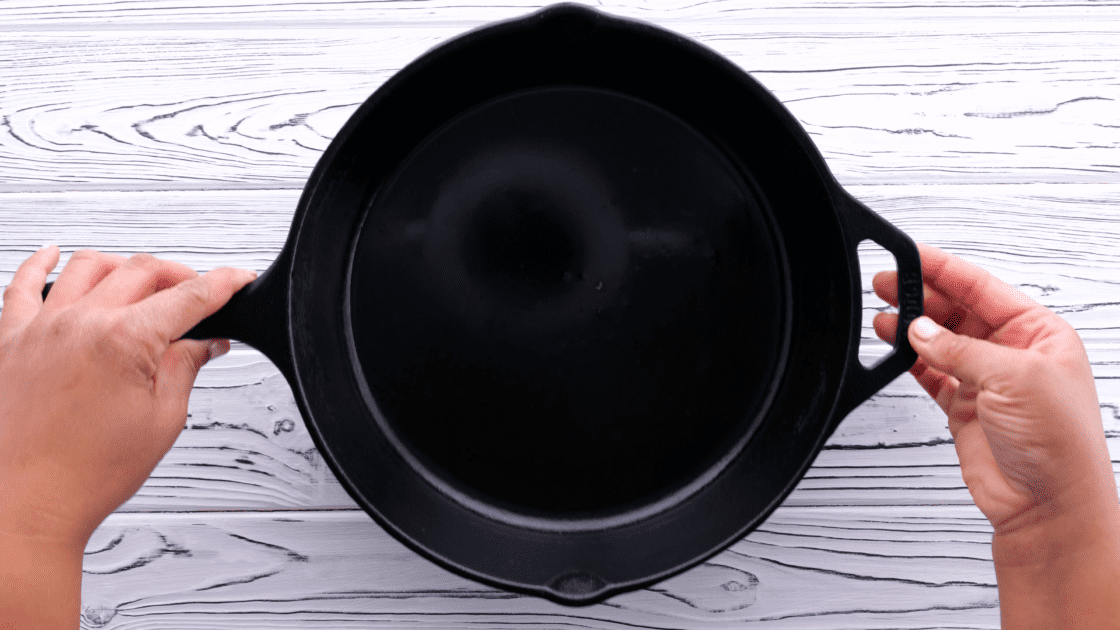

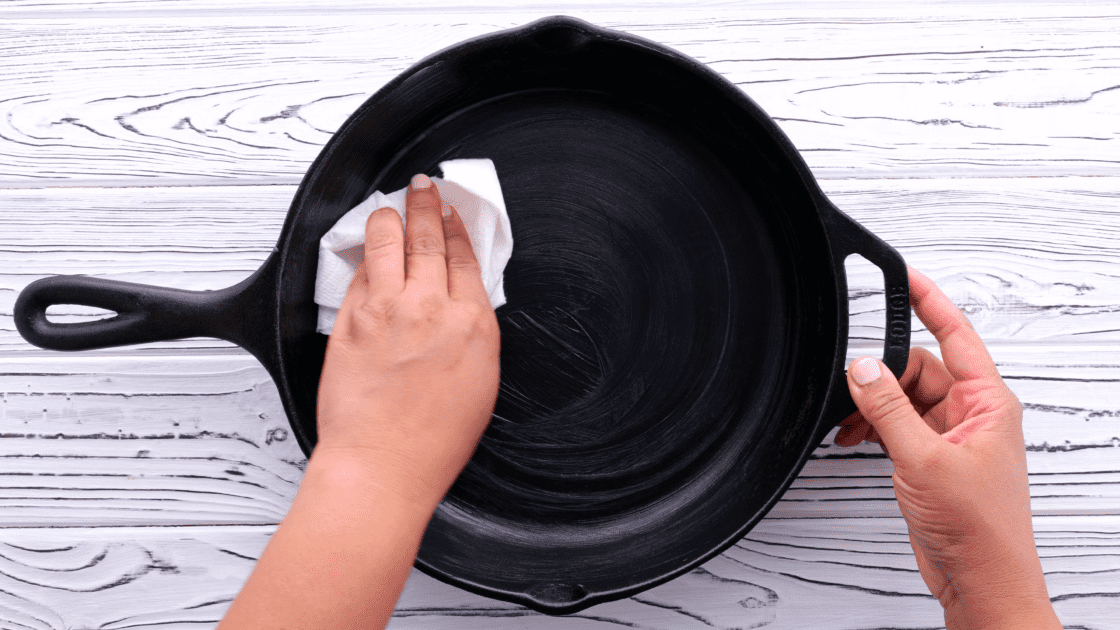

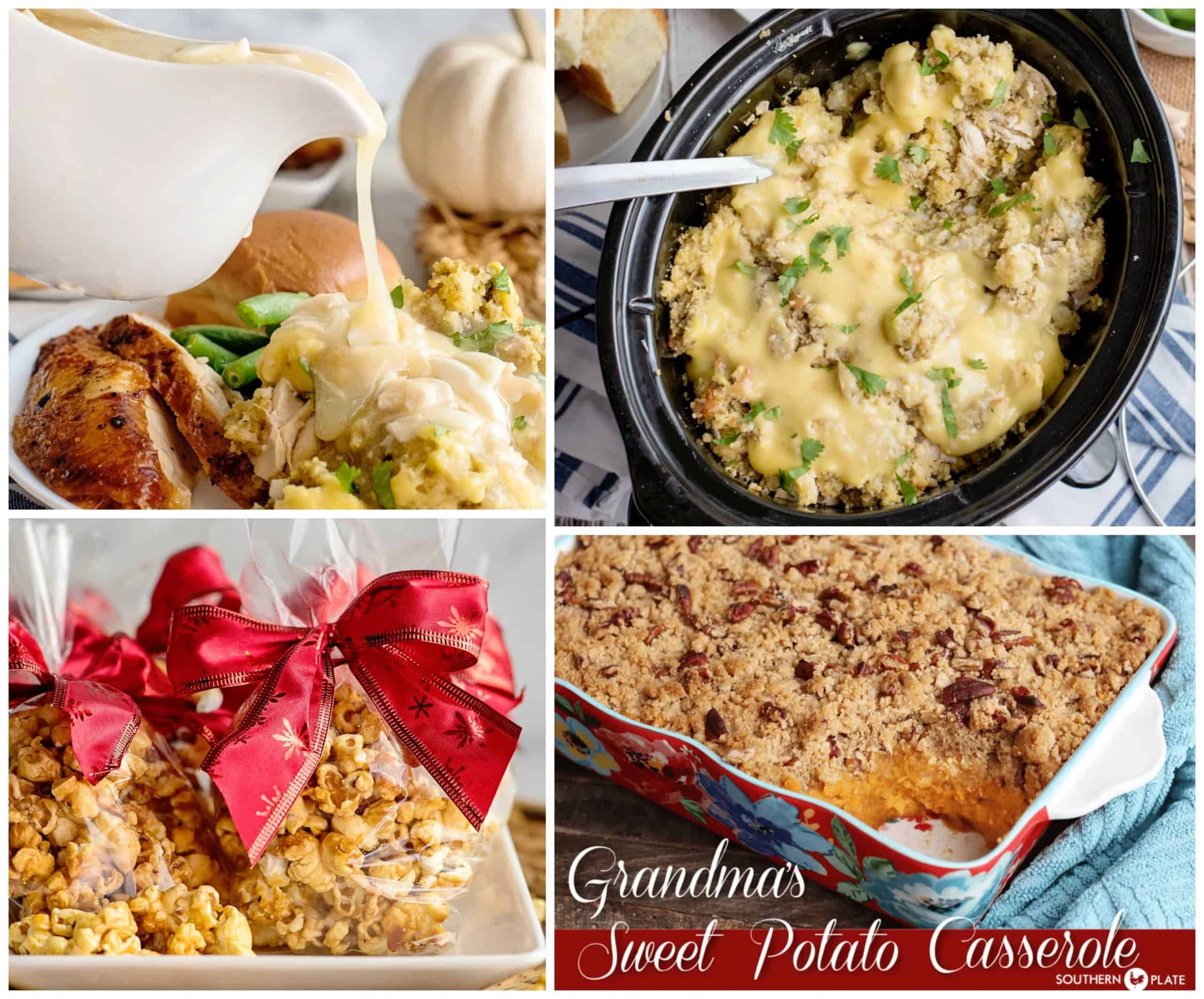
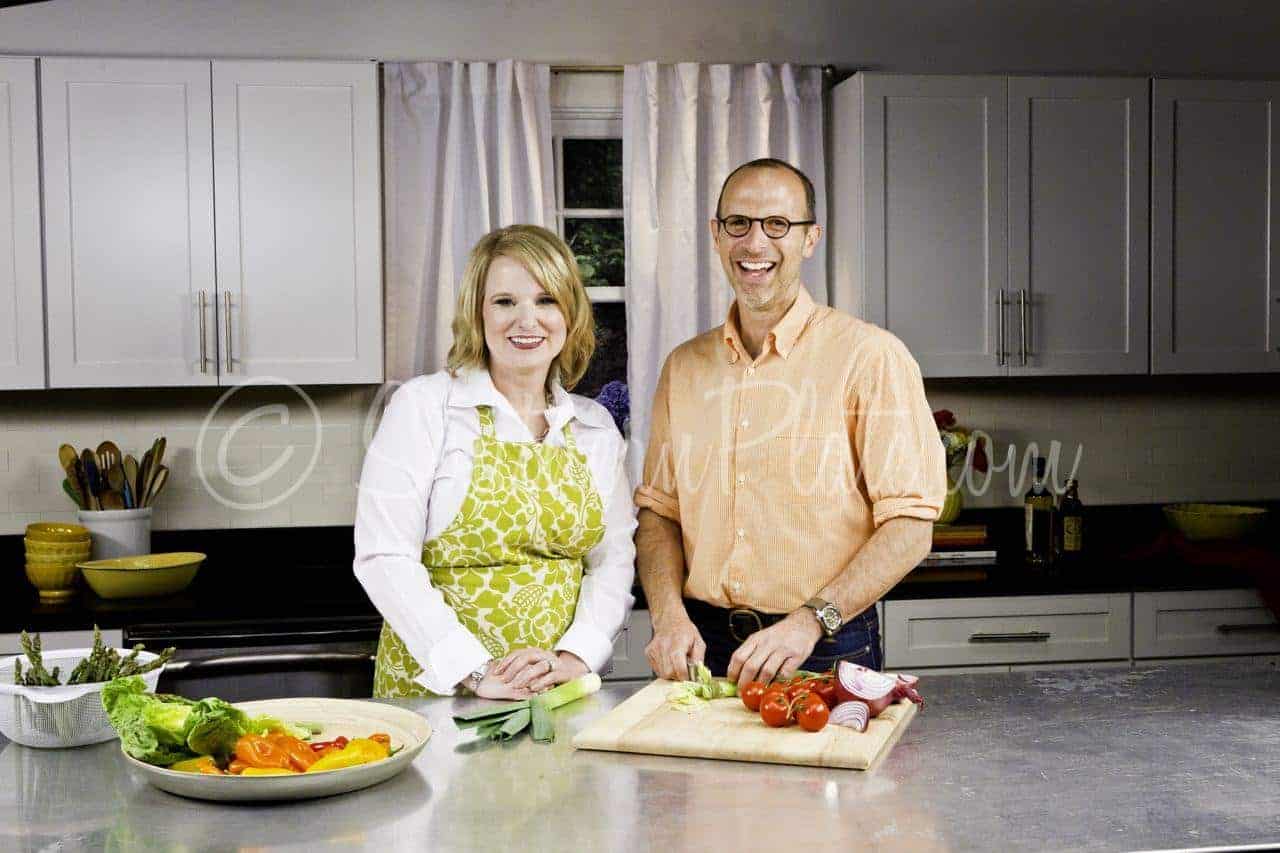
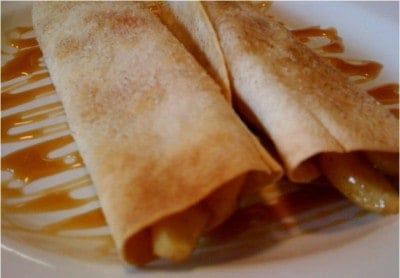
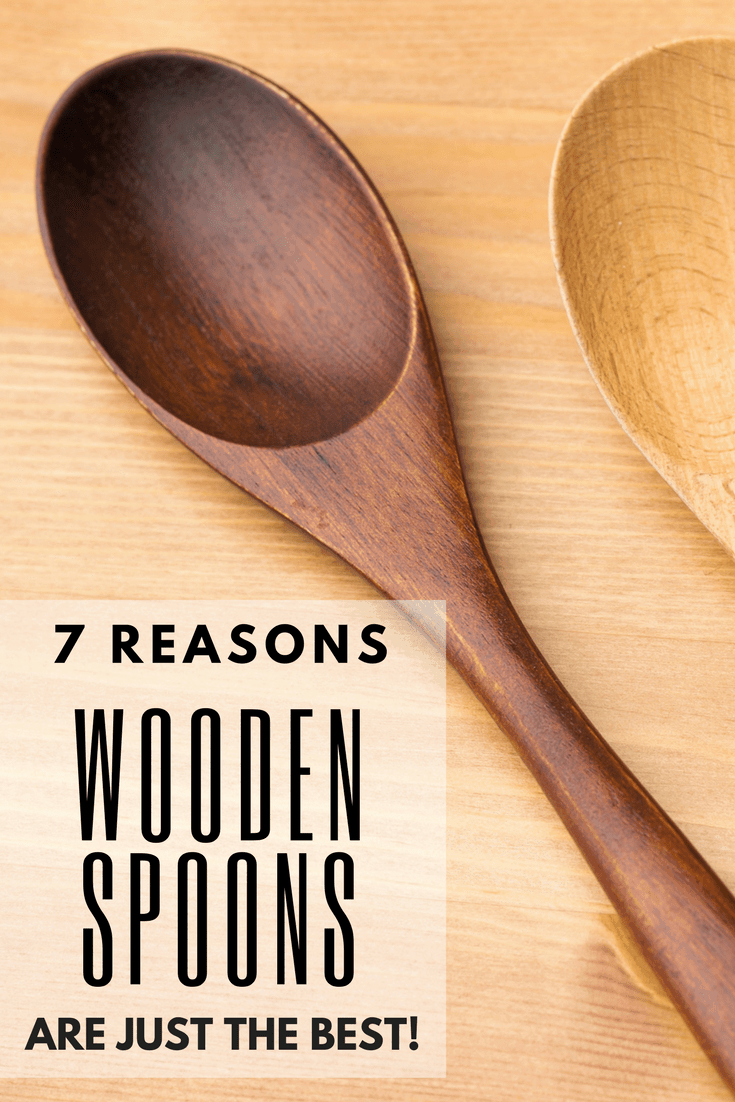

I too scrubbed my mothers crusty cast iron skillet to shiny gray when I was about 7 years old. She didn’t just gasp with horror, she busted my backside with her paddle. As an adult, I have never had success with seasoning a cast iron skillet and almost an aversion to trying, but I know that they are amazing to cook with. Your tutorial is wonderful and has given me the urge to try again.
i have some old rusty pans, a skillet and dutch oven. my husband has sandblasted them and used a grinder to try and smooth out the bottom. they are still pretty pitted but clean and shiny, can these pans be used? even if they are pitted ?
Thank you for your helpful tips.
Why when i dry off my (old long time used) skillet does it give off black residue & also sometimes turns foods black ? Is this normal or need more seasoning?
Thanks
I would like to say, those of you that wash castiron in soap. I cook very hot green and red chilli in one of my castiron skillets, I rince it out in hot water, light brillo pad, light oil.
The next day my wife decided she was going to fix bacon in it, she didnt know I had used the same skillet for chilli prior.
The bacon was to hot for her to eat it. so If the chilli stayed in the pours of the cast iron, I would think the soap would do the same thing. I dont put soap on any of my cast iron.
I burn my castiron out in the wood burner when the coals are right I put the castiron on top to get plenty hot, then I put the cast iron in on top of the coals and shut the door, about a hour or so depending on how crusty it is… its clean. I rince it in hot water under the faucet in the sink. put it on the burner to dry.
Oil it down put it in the oven for 3hrs at 200 deg. then I wipe the oil out.
Gary,
I’ve been reading these post for quite awhile today. I was waiting for someone to make a comment against this process..
Yes, I don’t care what any of Y’all say, the soap goes deep into the pores of the cast iron!
When My gram was alive, she used nothing but lard! I don’t know how the usage of other things such as Crisco came into play? I’m 59 years young these days and still remember Grams and Great Grams Ways of old.. I was doing dishes when I was a youngin and washed a cast Iron pan.. My Gram then and there proceeded in teaching me the do’s and don’ts of a Cast Iron pan cleanup.. Soap was definetely NOT on the list. If anything she sent I or my brother down to the creek with them for a weekly cleaning in sand and gravel. All of the older people did the same thing with them back then…. and were very serious about the handling and care taking of Cast Iron..
I had to take the cast iron pan I got soap on and do a complete cleaning down to the metal with sand and gravel Twice just to be sure it had no more soup or any other foreign substance left on it, Then of course the seasoning proces started all over again.
I’ll never forfet the jaw chawin I got from her after doing that so it’s been real easy throughout the years to remember how to season and clean a Cast Iron cooking utinsel..
No Soap my friends, Clean sand and a wash rag………..
I just bought 6-7 old pieces of Cast Iron goodies and was cleaning and seasoning, Then it hit me, :What are people doing to clean them these days…I didn’t care for what I read so I thought I’d give my process for Y’all to try..
Good Luck friends..
I forgot to tell Y’all that when you put cast Iron away put a towel or paper towels between the two pans.. That will help keep the dust off and soak up just a little of the lard. Hang them is more advised ifin ya got the room..
I agree with you Gregory. My grandmother always said not to use soap on the skillet when washing. She said to wipe it out and use water only if necessary. She said to then put it on the eye and heat it on high until dry. She then would splash a tiny bit of oil on a paper towel and wipe the inside. I asked her about germs/bacteria etc and she laughed at me. She said that if the bacteria could handle high heat on the stove, we were all done for! 😀
I have an old reversible cast iron griddle/grill that I recently dug out of the garage and hopefully reseasoned properly. To remove the rust, I soaked it for 24 hours in a solution of vinegar and Coke (I didn’t have enough of either so just combined them) then scrubbed the heck out of it with Bar Keeper’s Friend and a green/yellow Scotch Brite scrubbing sponge. The serious rust went away and after washing with hot water and dishwashing detergent, was left with mostly bare metal and what I guess would be termed surface rust that appeared to be forming almost before my eyes. I immediately swabbed it with Crisco and stuck it in the oven for several seasoning sessions on high heat. My question is about that new surface rust…..will the seasoning and subsequent repeated seasonings stop the rust or will it continue to “grow” underneath the seasoning?
Thank you for your website. I swore to my mother 30 years ago that I’d NEVER mess with cast iron cookware but here I am……excited about the prospects to the point that I’ve purchased a large and small dutch oven. Never say never!!!
Or if you oven has a self cleaning feature this works great for removing the old season and any left over food that might be on your skillet.